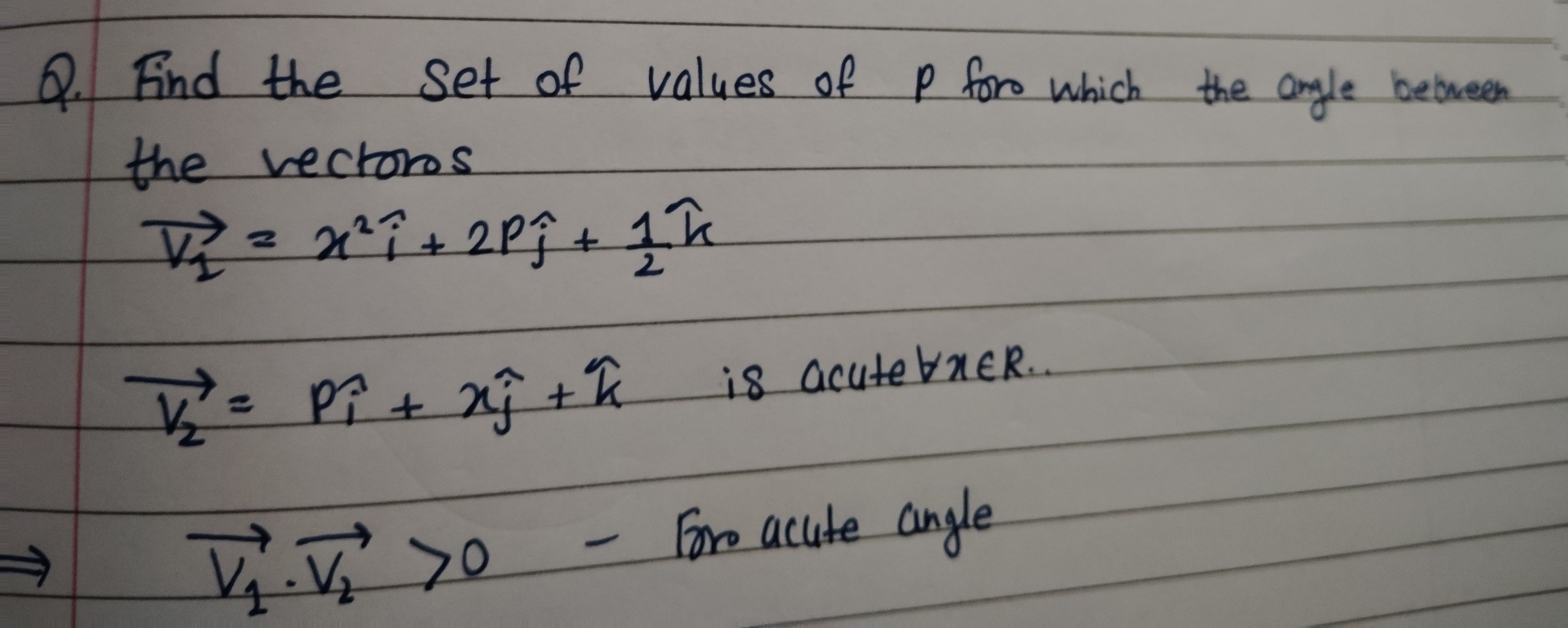Question
Question: Find the set of values of $p$ for which the angle between the vectors $\vec{V_1}=x^2\hat{i}+2p\hat{...
Find the set of values of p for which the angle between the vectors
V1=x2i^+2pj^+21k^
V2=pi^+xj^+k^ is acute ∀x∈R.
⇒V1.V2>0 - For acute angle

The set of values of p is [0,21).
Solution
The angle between two vectors V1 and V2 is acute if their dot product is positive, i.e., V1⋅V2>0.
Given vectors are: V1=x2i^+2pj^+21k^ V2=pi^+xj^+k^
Calculate the dot product: V1⋅V2=(x2)(p)+(2p)(x)+(21)(1) V1⋅V2=px2+2px+21
We need this expression to be strictly positive for all x∈R: px2+2px+21>0∀x∈R
We consider two cases for the coefficient of x2:
Case 1: p=0 If p=0, the inequality becomes: (0)x2+2(0)x+21>0 21>0 This statement is true. Thus, p=0 is a valid value for which the angle is acute for all x∈R.
Case 2: p=0 If p=0, the expression px2+2px+21 is a quadratic in x. For a quadratic expression Ax2+Bx+C to be strictly positive for all real x, two conditions must be met:
- The leading coefficient A must be positive (A>0).
- The discriminant D must be negative (D<0), indicating no real roots, so the parabola never touches or crosses the x-axis.
In our quadratic px2+2px+21, we have A=p, B=2p, and C=21.
Condition 1: p>0.
Condition 2: D<0 The discriminant D is B2−4AC. D=(2p)2−4(p)(21) D=4p2−2p We need D<0: 4p2−2p<0 Factor out 2p: 2p(2p−1)<0 To solve this inequality, we find the roots of 2p(2p−1)=0, which are p=0 and p=21. Since the parabola 4p2−2p opens upwards, 2p(2p−1) is negative between its roots. So, 0<p<21.
Combining Condition 1 (p>0) and Condition 2 (0<p<21), the intersection is 0<p<21.
Conclusion: From Case 1, p=0 is a valid value. From Case 2, 0<p<21 are valid values. Combining both cases, the set of values for p is [0,21).
